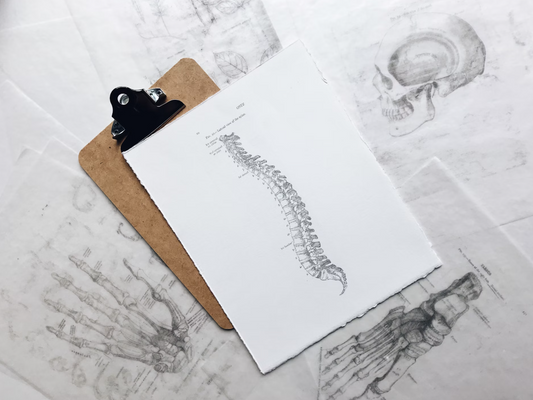Breathing is the foundation of vocal performance. Whether you’re singing your heart out on stage or delivering a powerful speech in front of an audience, how you breathe significantly impacts the sound, control, and endurance of your voice. Proper breathing techniques can help you project your voice, prevent vocal strain, and enhance your overall vocal performance.
In this article, we’ll explore the critical connection between breathing and vocal performance, and provide tips and techniques to help singers and speakers use their breath to their advantage.
Why Breathing Is Essential for Vocal Performance
Your voice is powered by your lungs, and the way you breathe directly affects how well you can project sound, maintain vocal health, and perform with stamina. Here’s why breathing matters:
1. Breath Supports Sound Production
The diaphragm, a large muscle located beneath your lungs, plays a key role in voice production. By engaging the diaphragm during breathing, you can create steady airflow, which supports strong, resonant sound. Without proper breath support, your voice can become weak, strained, or breathy.
2. Breathing Impacts Vocal Control
Breathing allows you to control the pitch, tone, and volume of your voice. Shallow or irregular breathing can limit your ability to modulate these qualities, whereas deep, controlled breathing helps you produce a more consistent and expressive sound.
3. Breath Helps with Endurance
Whether you’re singing for hours or speaking in front of a crowd, having good breath control is essential for stamina. Without it, you may find yourself running out of breath mid-sentence or unable to maintain a consistent vocal quality.
4. Breathing Affects Vocal Health
Proper breathing helps you avoid vocal strain and injury. By supporting your voice with sufficient air and avoiding tension in your throat, you can keep your vocal cords healthy and avoid hoarseness, fatigue, or even vocal cord damage.
Breathing Techniques for Singers and Speakers
To optimize your vocal performance, it’s important to practice techniques that strengthen your breathing muscles and increase lung capacity. Here are some key breathing exercises and strategies to enhance your voice:
1. Diaphragmatic Breathing (Belly Breathing)
The cornerstone of efficient breath support is diaphragmatic breathing. This technique involves using the diaphragm (rather than the chest) to draw air into your lungs, creating a deep, controlled breath that supports your voice.
How to do it:
- Place one hand on your chest and the other on your abdomen.
- Inhale deeply through your nose, allowing your abdomen to expand as you fill your lungs with air.
- Exhale slowly through your mouth, allowing your abdomen to fall.
- Focus on keeping the hand on your chest still, while the hand on your abdomen should rise and fall with each breath.
2. Pursed-Lip Breathing for Breath Control
Pursed-lip breathing is an effective technique for controlling the flow of air, ensuring that you release it slowly and steadily, which is especially helpful for singers and speakers who need to manage their breath throughout a performance.
How to do it:
- Inhale through your nose, then purse your lips as if you’re blowing through a straw.
- Exhale slowly and steadily through your pursed lips, focusing on extending the exhale for as long as possible.
- Practice this technique to help control breath flow and prevent rushing or running out of air.
3. Breath Support Exercises for Strength
Breath support is vital for holding notes, sustaining sentences, and maintaining a strong vocal presence. Strengthening your diaphragm and respiratory muscles will enhance your vocal endurance.
How to do it:
- Stand tall with your feet shoulder-width apart.
- Inhale deeply through your nose, filling your abdomen with air.
- Slowly exhale while making a hissing sound ("ssssss"), aiming to control the airflow for as long as possible.
- Gradually increase the duration of your exhale as you build strength in your diaphragm.
4. Breath Awareness for Timing and Phrasing
For singers and speakers, timing your breath is just as important as breathing correctly. Learning to take breaths at the right moments will help you maintain control over your performance and deliver lines or lyrics smoothly.
How to do it:
- Practice speaking or singing a passage while consciously identifying natural breath points (where you would normally pause or take a breath).
- Take a deep breath in before starting, then focus on controlling your breath throughout each sentence or phrase.
- Aim to take a breath between sentences or at punctuation marks to maintain a smooth, uninterrupted flow of sound.
Breathing Tips for Singers
For singers, breathing is not only about supporting your voice but also about helping you control pitch, volume, and vibrato. Here are some additional tips for singers:
1. Use Your Full Lung Capacity
Avoid shallow chest breathing, which can limit your range and cause strain. Instead, use your diaphragm and ribcage to take in deep breaths, filling your lungs fully to ensure you have enough air for each phrase.
2. Focus on Steady Exhalation
Singers often need to sustain long phrases without running out of breath. By focusing on a steady, controlled exhalation, you can prevent vocal strain and create more even, consistent sound throughout your performance.
3. Maintain Posture and Relaxation
Good posture supports optimal breathing. Stand or sit up straight with your shoulders relaxed, allowing your lungs to expand fully. Tension in the neck, shoulders, or throat can interfere with breath control and vocal quality.
Breathing Tips for Speakers
For speakers, particularly those who speak for extended periods, proper breathing helps with voice projection, clarity, and endurance. Here’s how you can improve your breathing for speaking engagements:
1. Take Breaks to Breathe
When delivering a speech or lecture, it’s important to take intentional breath breaks. Pausing between sentences or thoughts gives your lungs time to refill, preventing you from running out of air mid-sentence and helping to maintain vocal energy throughout your talk.
2. Avoid Shallow Breathing During Public Speaking
Speaking at a fast pace can lead to shallow breathing, which reduces vocal strength and clarity. Focus on slowing your pace and ensuring you’re breathing deeply between each sentence to maintain a steady and powerful voice.
3. Project from Your Diaphragm
To project your voice effectively, use diaphragmatic breathing and focus on speaking from your diaphragm rather than forcing air through your throat. This will help your voice carry without straining, ensuring your message is heard clearly.
Conclusion
Breathing is the key to vocal performance, whether you’re singing on stage or delivering a powerful speech. By practicing proper breathing techniques, you can improve your vocal control, endurance, and overall sound quality. Regularly engaging in diaphragmatic breathing, strengthening your breath support, and timing your breaths will allow you to perform confidently and without strain.
Remember, your voice is a powerful instrument, and learning how to breathe correctly is the first step toward unlocking its full potential. With consistent practice and proper breath control, you’ll elevate your vocal performance to new heights.




